Fossils act as precious archaeological remnants of the Earth, offering us insight into the day-to-day life of species that called our planet home millions of years ago. It’s a typical sight to encounter well-known fossils such as the Stegosaurus and Tyrannosaurus Rex exhibited in museums. However, the multitudes of unique and remarkable fossils discovered by paleontologists, especially in recent years, are less recognized. These fossils, which have been extensively preserved in substances like ash, amber, or sand, are in a state adequate enough for us to study and learn from.
Fossilization is a complicated and time-consuming process. It normally happens when sediments are compacted under intense pressure combined with the replacement of organic matter by silica and other materials in a process referred to as petrification. Since most tissue, including skin, organs, and muscle, decays before full fossilization can occur, we mostly find bones. Though there are plenty of bones on this list, we’ve also included a host of other bizarre fossils. (Did someone say fossilized sperm? Oh, we did.) You’ll likely be shocked at some of the weird fossils on this list; ones that unfortunately don’t get as much media attention as they should, such as a turtle the size of a helicopter and an ancient arthropod orgy. Read on to discover the 25 Most Bizarre Fossils Ever Discovered.

About 74 million years ago, a Velociraptor and Protoceratops were locked in a fierce duel in present-day Mongolia. The Velociraptor plunged its rear claws deep into the neck of the Protoceratops which responded by trying to rip the former's arm off. The two were likely covered by a collapsing sand dune, fossilized in fighting stances that paleontologists amazingly discovered while digging them up.
 Source: New Scientist, Image: Wikipedia
Source: New Scientist, Image: Wikipedia Though researchers most often find bones of fossilized animals, diggers in Antarctica found something even weirder: sperm. Dating back 50 million years, the sperm is attributed to a collared worm and is the oldest animal sperm yet discovered. Though such organic matter would normally easily break down, the worm's reproductive methods of shooting the sperm and eggs into a protective cocoon helped preserve this bizarre fossil discovery for ages.
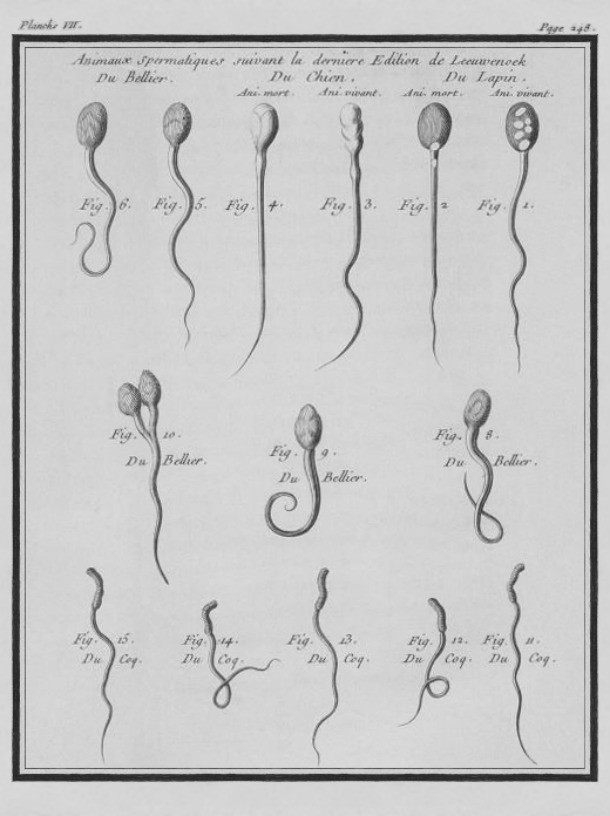 Source: Discover Magazine, Image: commons.wikimedia.org
Source: Discover Magazine, Image: commons.wikimedia.org Scientists have discovered a 500 million year-old eye in southern Australia. The delicately-preserved compound eye (like a fly's) has about 3,000 lenses, significantly better than the majority of its fellow creatures at the time. Paleontologists aren't sure which animal it belongs to, but it does show that very ancient creatures were indeed capable of having very powerful vision.
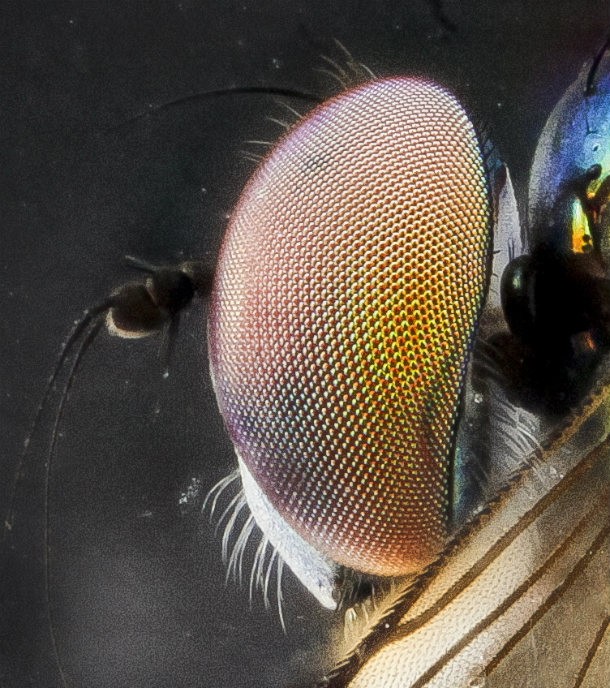 Source: Phys, Image: USGS Bee Inventory and Monitoring Lab via Flickr
Source: Phys, Image: USGS Bee Inventory and Monitoring Lab via Flickr The 1994 discovery of a fossilized oviraptor sitting on her eggs changed our understanding of dinosaurs forever. Previously, it was only speculated that some dinos sat on their eggs (like today's chickens do) to incubate them. This perfectly discovered fossil from Mongolia proved the assumption to be true.
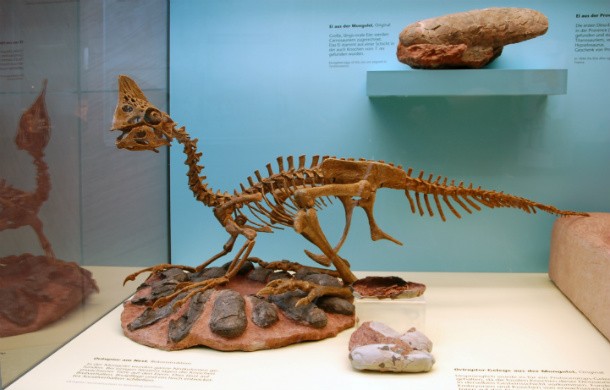 Source: New Scientist, Image: commons.wikimedia.org
Source: New Scientist, Image: commons.wikimedia.org "Til death do us part" proved true for two ancient turtles. Found in an ancient volcanic lake in western Germany, these two turtles were doing the good deed as they sank deeper into the lake in coital bliss. Since it was a volcanic lake, the deeper waters were toxic to the turtles who quietly died, still locked together in the mating position, well-preserved by the highly toxic waters which did them in.
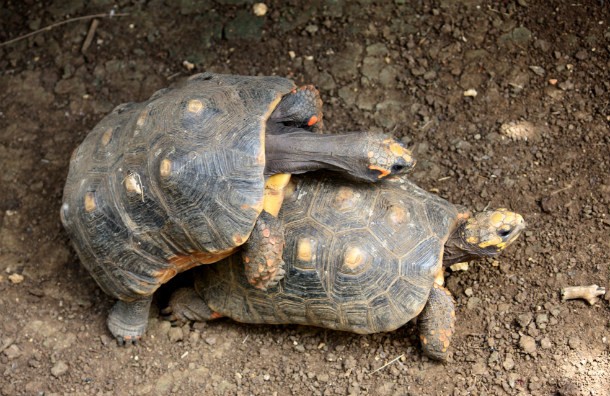 Source: New Scientist, Image: en.wikipedia.org
Source: New Scientist, Image: en.wikipedia.org Some people are scared of frogs just because they seem gross, but if we had existed 70 million years ago, we would have been afraid of them because they could eat dinosaurs. The largest frog ever discovered, Beelzebufo ampinga (AKA the frog from hell), could grow up to 16 inches (41 cm) long and weight up to 10 pounds (4.5 kg).
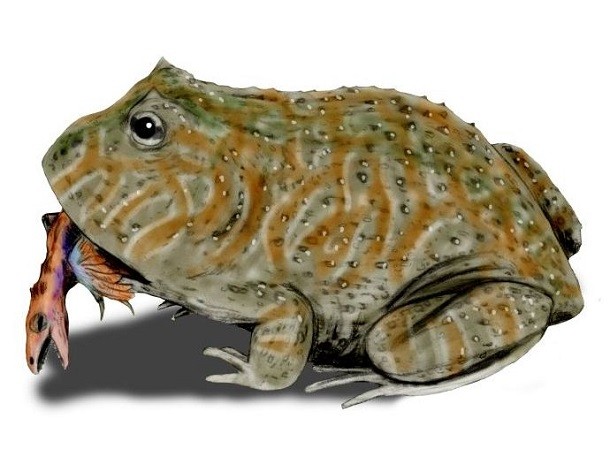 Source: National Geographic, Image: Wikipedia
Source: National Geographic, Image: Wikipedia It may seem unbelievable at first, but some of the most well-known African creatures likely roamed the English countryside a few thousand years ago. Legendary paleoecologist William Buckland identified the bones of a fossilized rhino and the preserved feces of then-local hyenas from 125,000 years back.
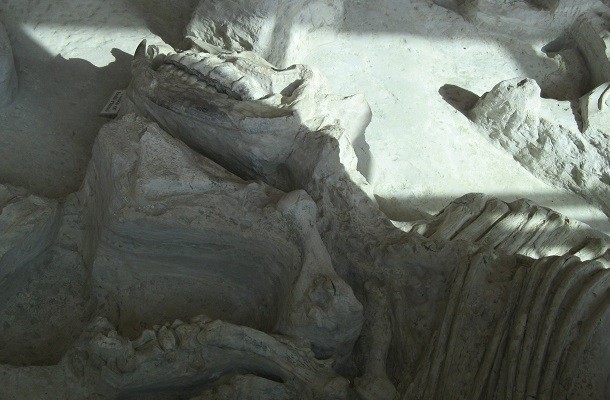 Source: Discover Magazine, Image: Wikimedia
Source: Discover Magazine, Image: Wikimedia The fossils of Dimetrodon reveal one of the most intriguing dinosaurs found to date. Found largely throughout the Red Beds of Texas, Dimetrodon is notable for the large fin on its back, speculated to have helped in temperature control while potentially giving the prehistoric beast an edge in hunting.
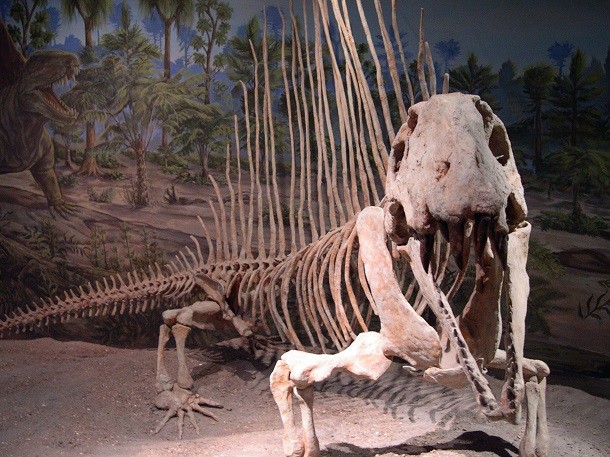 Source: Dinopedia, Image: Wikimedia
Source: Dinopedia, Image: Wikimedia Ancient volcanic eruptions were perfect for preserving ancient life, just as they did in Pompeii. When a volcano in Idaho erupted over 10 million years ago, the dust cloud spread for over a thousand miles. Over 200 skeletons have since been found in a Nebraskan dig site, including a young rhinoceros sucking its last bit of milk from its dead mother.
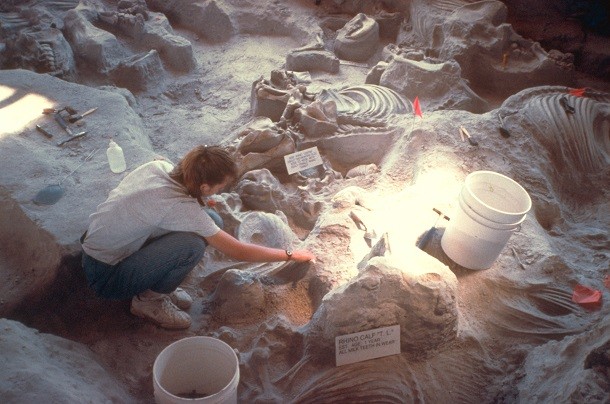 Source: University of Nebraska - Lincoln, Image: Wikipedia
Source: University of Nebraska - Lincoln, Image: Wikipedia One of the most amazing fossils ever discovered is that of a snake, Sanajeh indicus, ready to dine on a newly hatched sauropod dino. Since it could neither open its mouth wide enough to eat a whole egg nor break through the 2-millimeter thick shell, the snake waited at the nest for the eggs to hatch. A landslide fell on the nest just as the Indian snake was about to feast on a newly-hatched 1.6 foot-long (0.5 m) sauropod newborn, preserving the scene for millions of years.
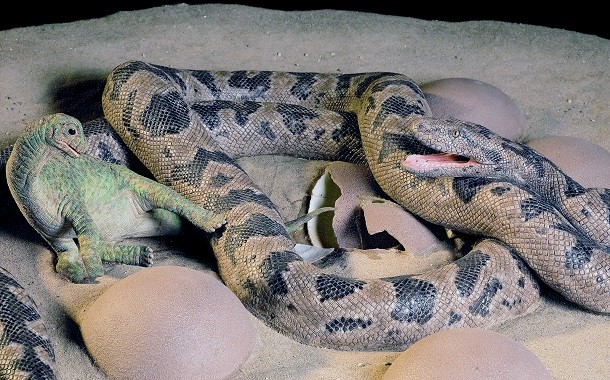 Source: New Scientist, Image: Wikipedia
Source: New Scientist, Image: Wikipedia Though most worms look a bit phallic, Spartobranchus tenuis takes things to another level. The prehistoric worm - dating back 200 million years - has recently provided the "missing link" in the evolutionary transformation between the two branches of hemichordates (related to modern-day sea urchins and sea stars). The creature's strange and elongated shape is believed to have played a role in the species' development.
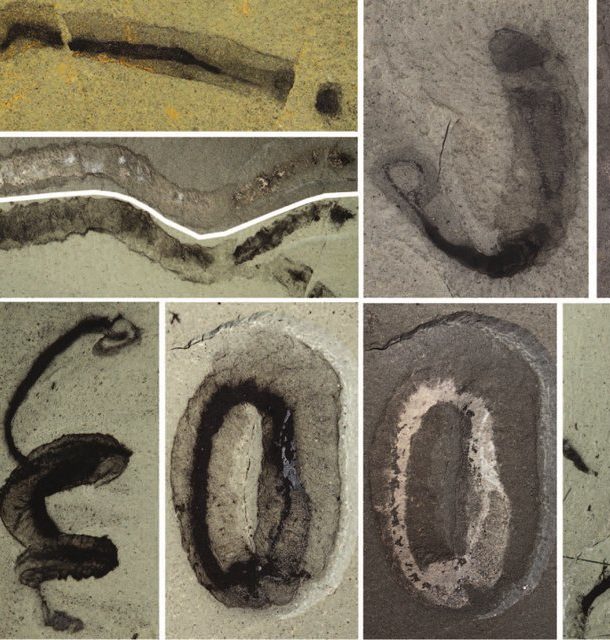 Source: University of Toronto, Image: pt.wikipedia.org (Image of hemichordata)
Source: University of Toronto, Image: pt.wikipedia.org (Image of hemichordata) Interested in more fascinating discoveries? Check out 25 Unusual Things You Won’t Believe Were Found In A Back Yard.
Studying fossils can also make us question our own modern-day existences. The skull of a narwhal- and beluga-relative found in Virginia has led scientists to question what made its modern-day relatives confine themselves to high northern latitudes. Current speculations include oceanographic changes or intense resource competition.
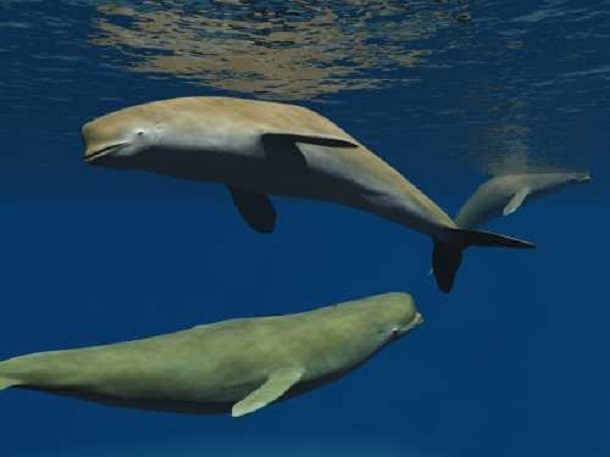 Source: Smithsonian Insider, Image: Wikimedia
Source: Smithsonian Insider, Image: Wikimedia Around 155 million years ago, a pterosaur was out for a light snack. Flying above the water's surface, it picked out a herring-like fish and began to fly off. "Not so," said Aspidorhynchus, a large fish about 2 feet (.6 m) long as it leapt from the water to clamp down on the pterosaur's wing. Since its teeth weren't strong enough to cut through the flyer's tough wing fibers, it couldn't take a proper bite nor free itself from the sinewy muscles. In their struggle, the two beasts sank into deep, low-oxygen water on their path to eventual death and fossilization.
 Source: New Scientist, Image: Wikipedia
Source: New Scientist, Image: Wikipedia Scientists still aren't sure about a strange, ovular fossil found in Mazon Creek, Illinois. The state fossil of Illinois, Tullimonstrum gregarium is only a few inches long with tooth-ridden pincers at the end of a long snout, two eye stalks, and a finned tail. Unfortunately, not even 60 years has helped place this strange fossil with any other known invertebrate group.
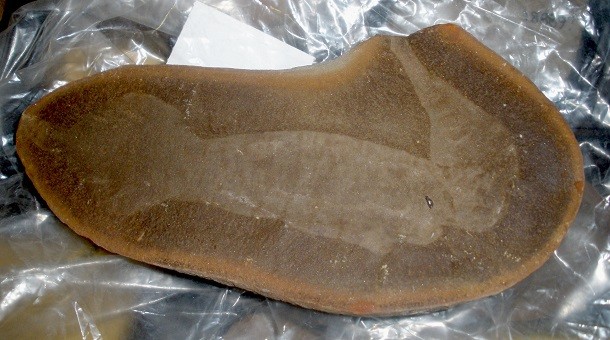 Source: Discover Magazine, Image: Wikimedia
Source: Discover Magazine, Image: Wikimedia Just like modern-day animals, ancient mammoths used to fight to impress a mate. Scientists digging in Nebraska initially thought they found a mutant mammoth with four tusks, later discovering that two mammoths had gotten their tusks stuck around each others heads, likely during head-butting. Unable to free themselves, the two died soon after.
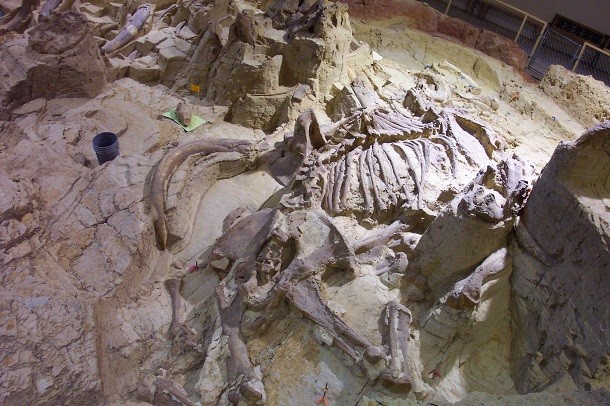 Source: PBS, Image: Wikipedia
Source: PBS, Image: Wikipedia Paleontologists digging in Colombia have unearthed a massive turtle the size of a small helicopter. Sixty million years ago, the 5'7" (1.7 m)-long Carbonemys cofrinii dominated parts of South America, even preying on ferocious crocodiles.
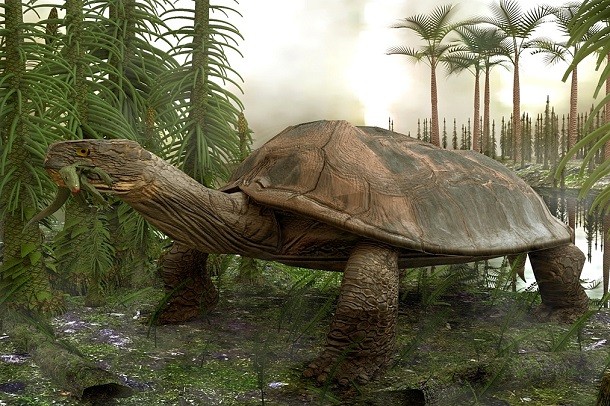 Source: Smithsonian Insider, Image: Wikipedia
Source: Smithsonian Insider, Image: Wikipedia Magnificently preserved footprints found in Glen Rose, Texas, show a fascinating dinosaur chase. A long-necked Sauropod was running alongside the river, likely just ahead of its pursuer: a ravenous theropod who just wanted a nice, raw steak. Before paleontologists arrived to dig up the tracks, locals were digging up the prints themselves and selling them off.
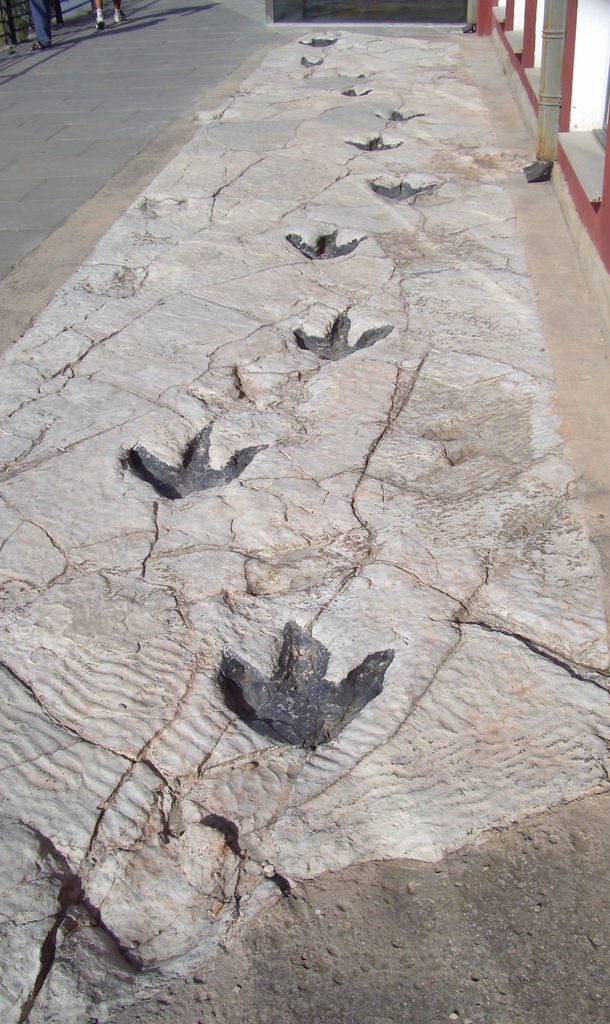 Source: New Scientist, Image: Wikipedia
Source: New Scientist, Image: Wikipedia If you find ants annoying now, it's a good thing you didn't live 50 million years ago. During that time, a massive ant the size of a hummingbird patrolled the Earth, even flying around on its own wings.
 Source: Famous Scientists, Image: Wikipedia
Source: Famous Scientists, Image: Wikipedia The vetulicolians have been a particularly difficult species for scientists to pin down. Filter-feeders which look more like 60's sci-fi creations, the sea-dwelling creatures are the early precursors to vertebrates (such as us). The stiff rod supporting their long tails was the ancestor to modern backbones.
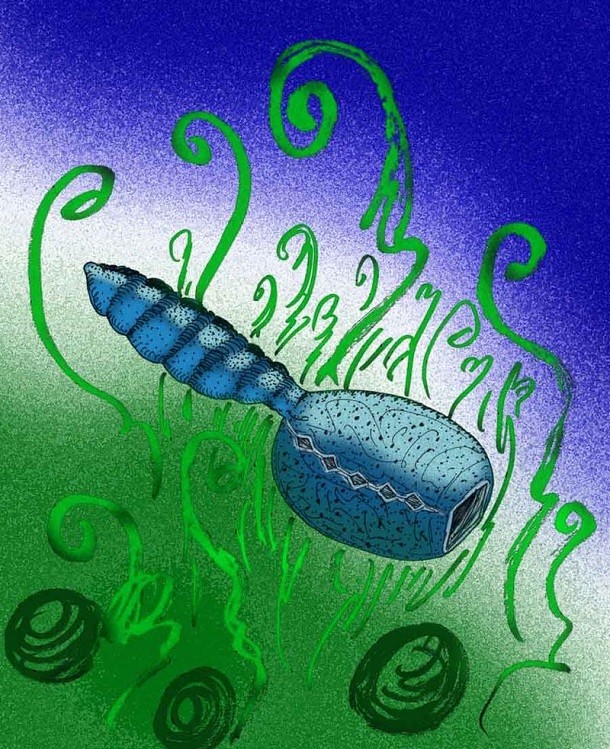 Source: Phys, Image: Wikipedia
Source: Phys, Image: Wikipedia One of our favorite seafood meals today - shrimp - was swimming around the oceans over 400 million years ago. At the beginning of the 21st century, paleontologists found one of the most bizarre fossils in existence: a preserved seed shrimp penis. Beyond being amazingly fossilized, the shrimp was said to be very well-endowed for its time, even called "Old Todger" by some British newspapers.
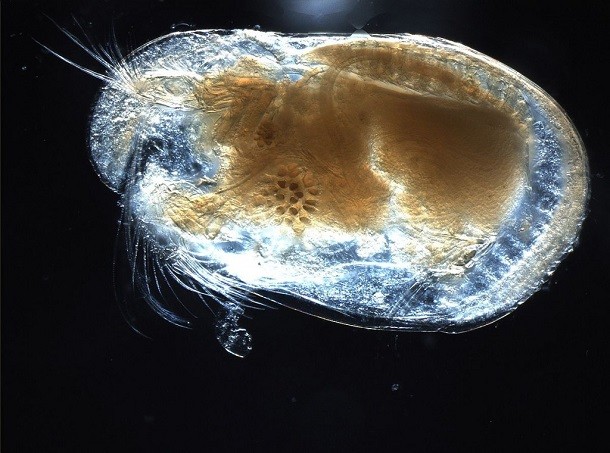 Source: Discover Magazine, Image: Wikipedia
Source: Discover Magazine, Image: Wikipedia If you thought a fossilized penis was weird, wait until you hear about fossilized feces. Though it may seem icky at first, ancient preserved poo is some of the most useful fossil remains, giving us clues to what animals ate and even how species bounced back after a mass extinction.
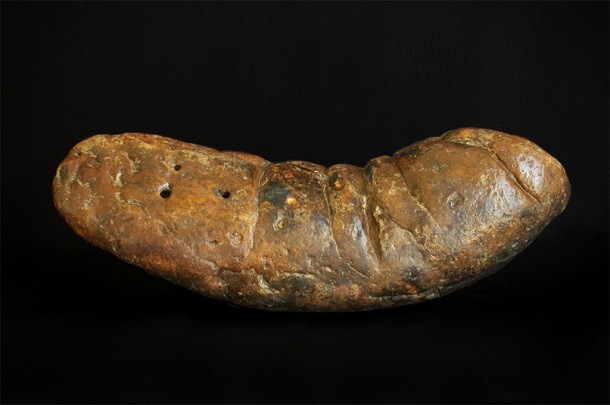 Source: Discover Magazine, Image: Wikipedia
Source: Discover Magazine, Image: Wikipedia Though plenty of bugs have been encased in amber, the discovery of one such mosquito in northwestern Montana changed the paleontological record. Found with a still-intact abdomen full of blood, the mosquito sank to the bottom of a pond and died just after a heavy meal, giving us evidence that hematophagy (AKA blood feeding) has existed for at least 46 million years. Unfortunately, it doesn't seem we'll be able to clone any dino's from the blood.
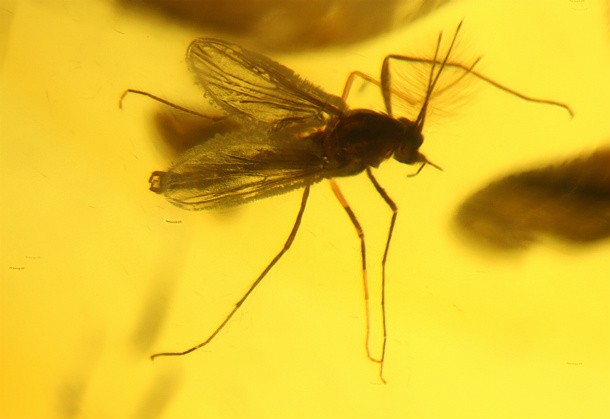 Source: Smithsonian Insider, Image: commons.wikimedia.org
Source: Smithsonian Insider, Image: commons.wikimedia.org The ichthyosaur was a dolphin-like reptile up to 13 feet (4 m) in length which existed until about 90 million years ago. Paleontologists in South Majiashan, China, discovered an incredibly bizarre ichthyosaur fossil during their digging - the only fossil like it ever found. The mother was somehow fossilized soon after giving birth to one baby, before giving birth to a second, and with a third part-way out of her birth canal.
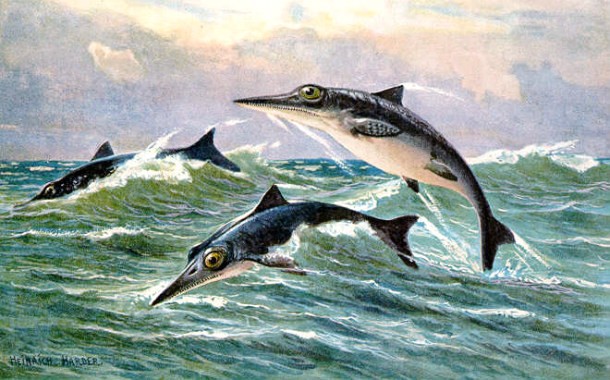 Source: New Scientist, Image:
Source: New Scientist, Image: Great White Sharks are chum(ps) in comparison to the Megalodon. A prehistoric shark whose jaw alone measures 11 feet (3.35 m) long, Megalodon has been revealed to have been the apex predator across all the world's early oceans, easily able to crush sea turtles and whales in its jaws.
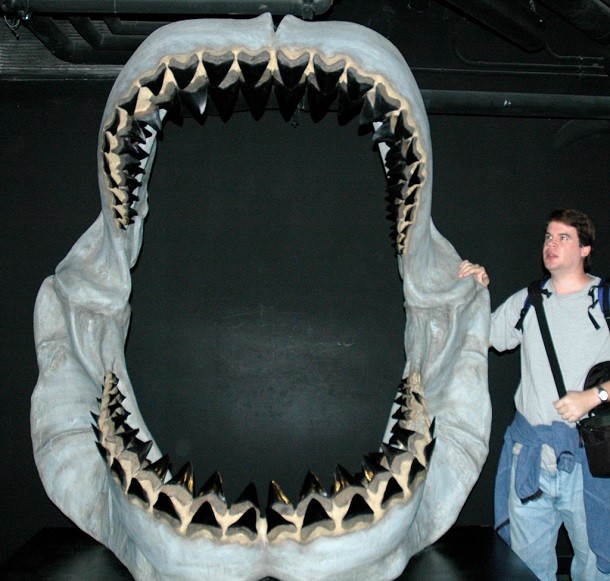 Source: PLOS One, Image: jsjgeology via Flickr
Source: PLOS One, Image: jsjgeology via Flickr Bearing a mild resemblance to Pokémon's Kabuto, trilobites were some funky creatures. Shedding their exoskeleton like all arthropods, trilobites were known for gathering in large groups to molt, largely for safety reasons. However, being all new and naked, these lobster-relatives would engage in raucous, bacchanalian orgies. One such orgy was fossilized forever when 250 million year old trilobites were buried under a hurricane's fury.
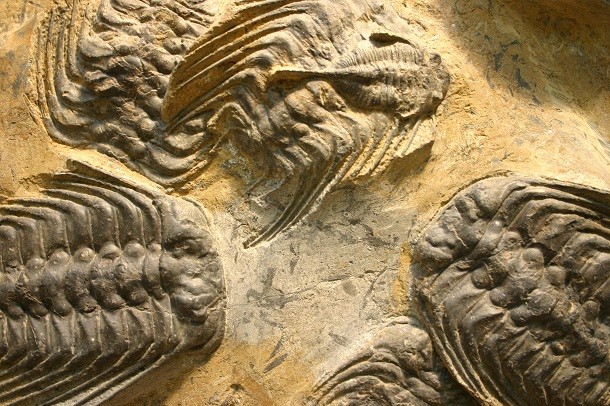 Source: University of Cincinnati, Image: Wikimedia
Source: University of Cincinnati, Image: Wikimedia 


























